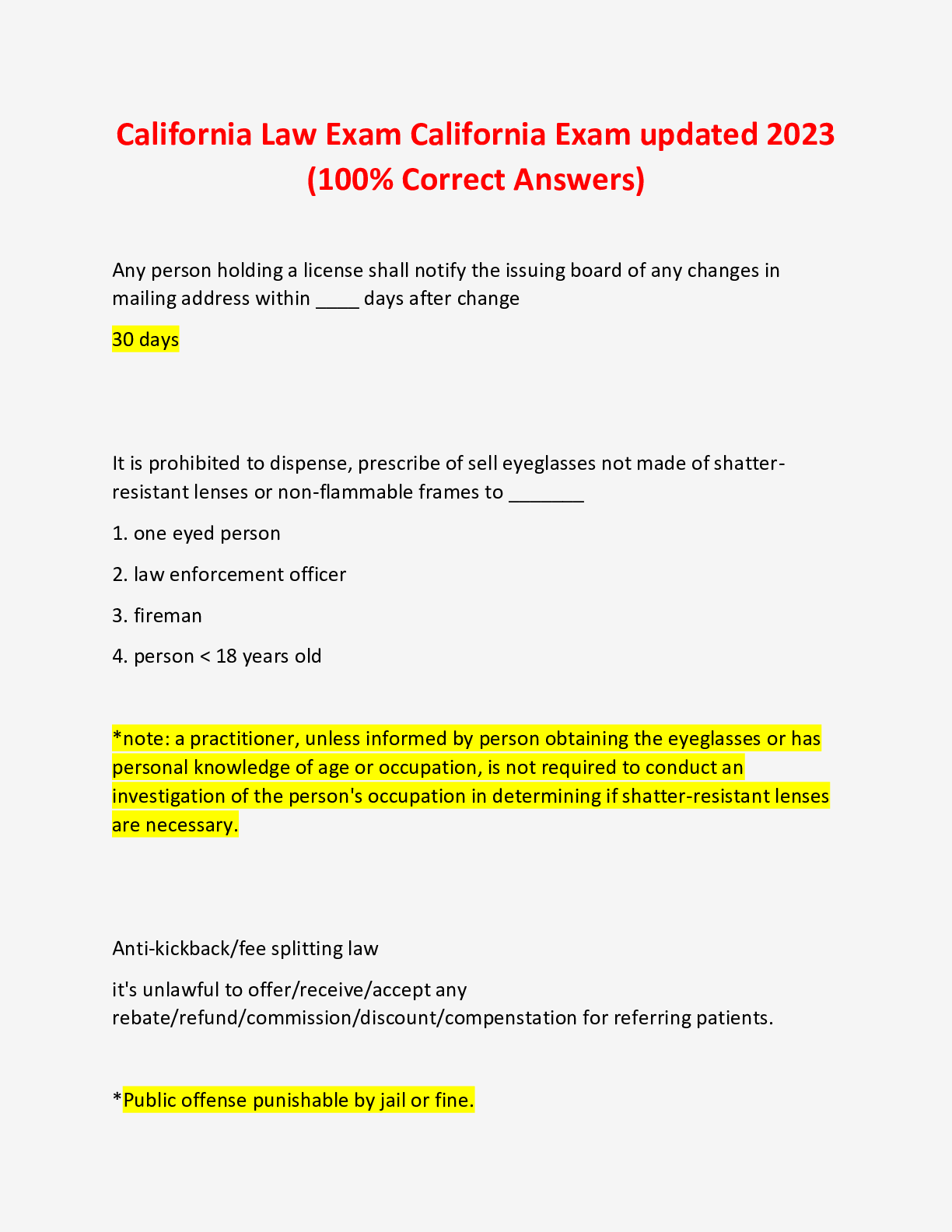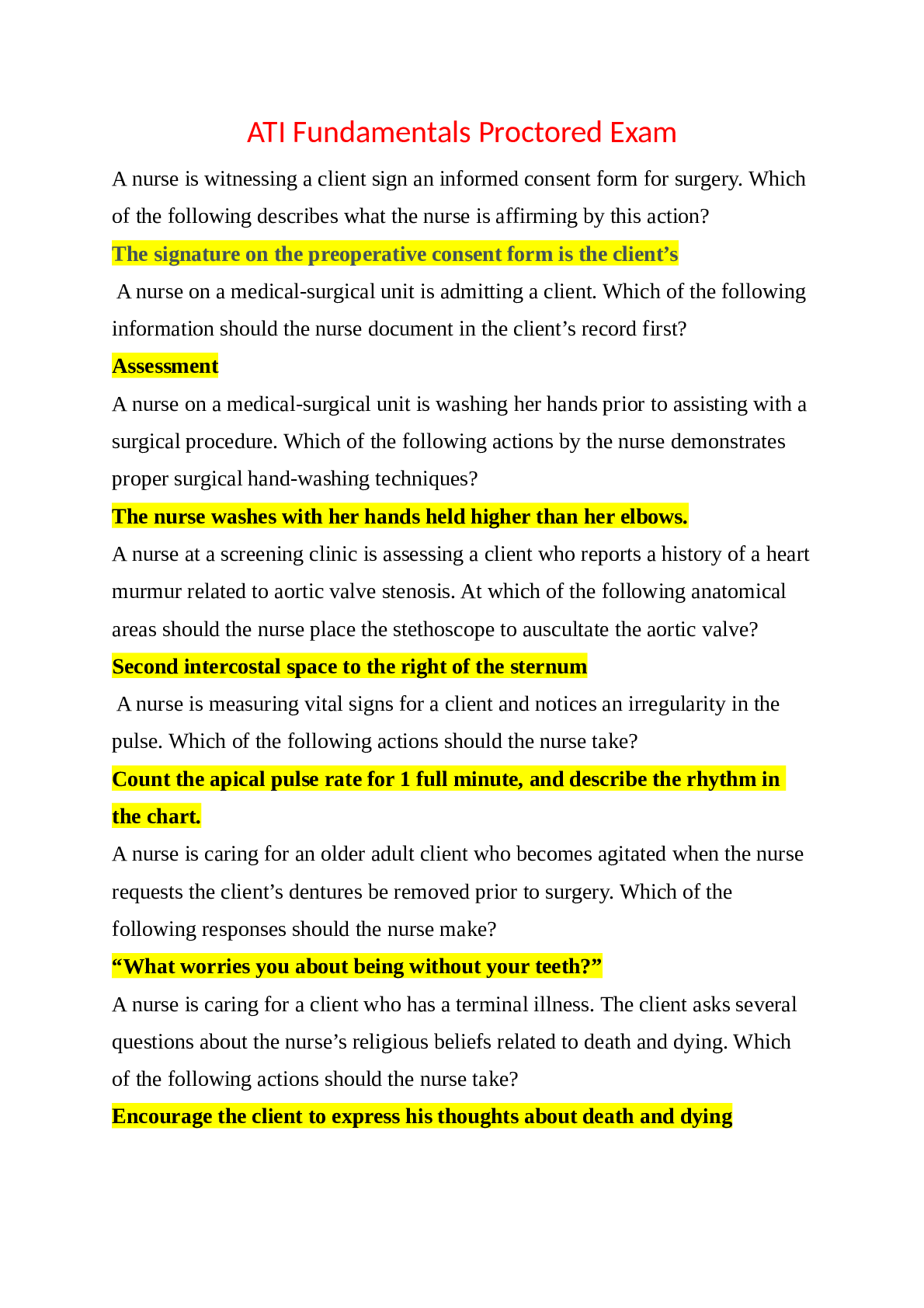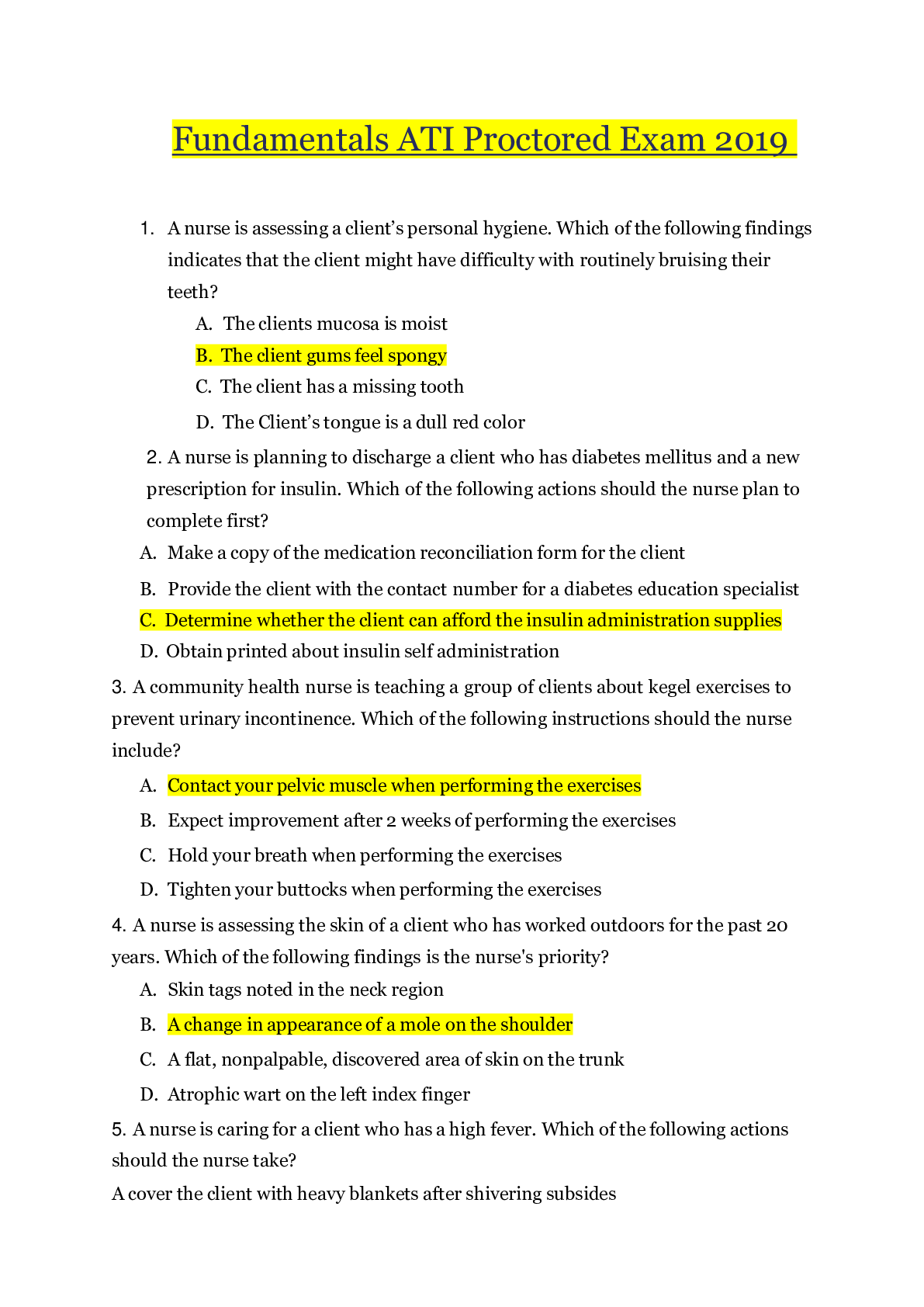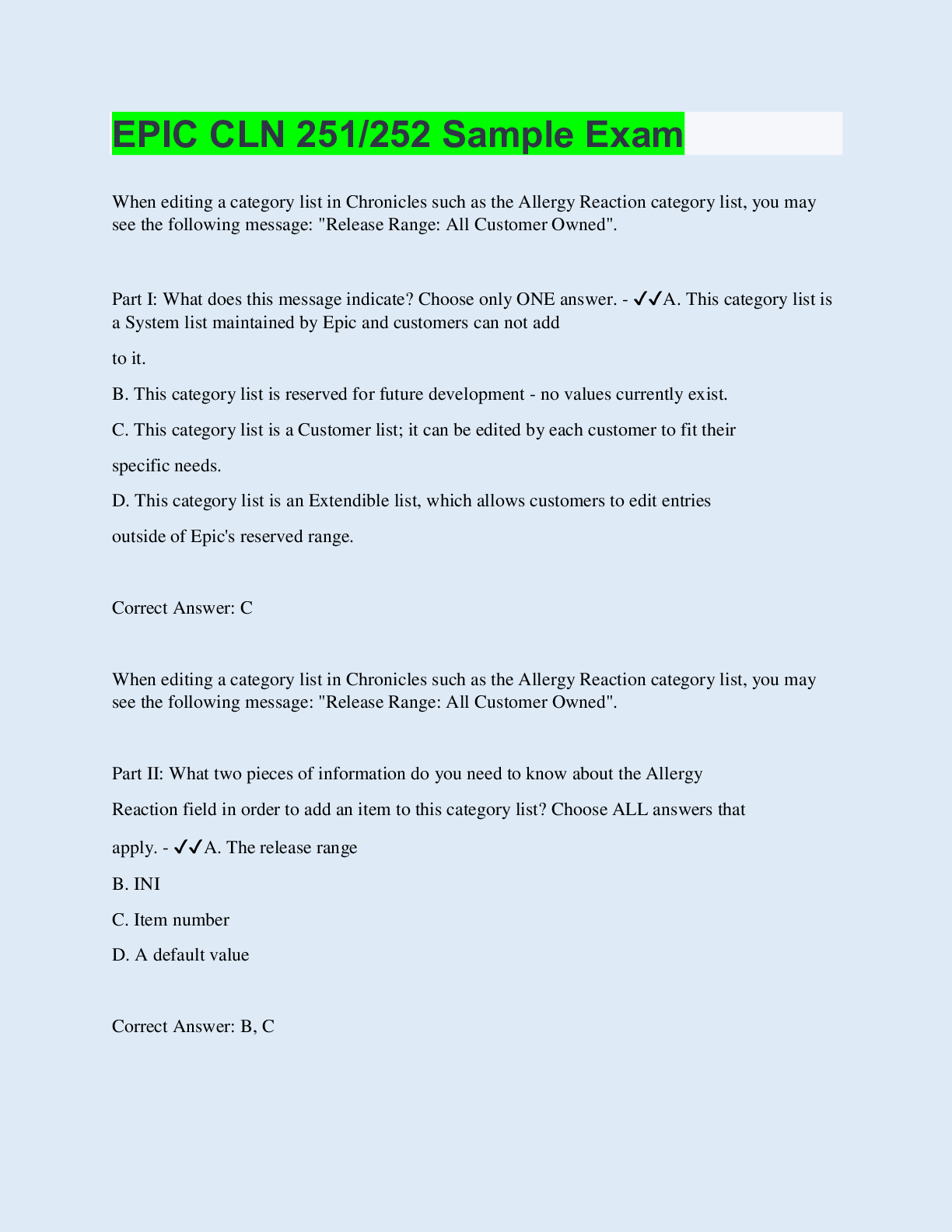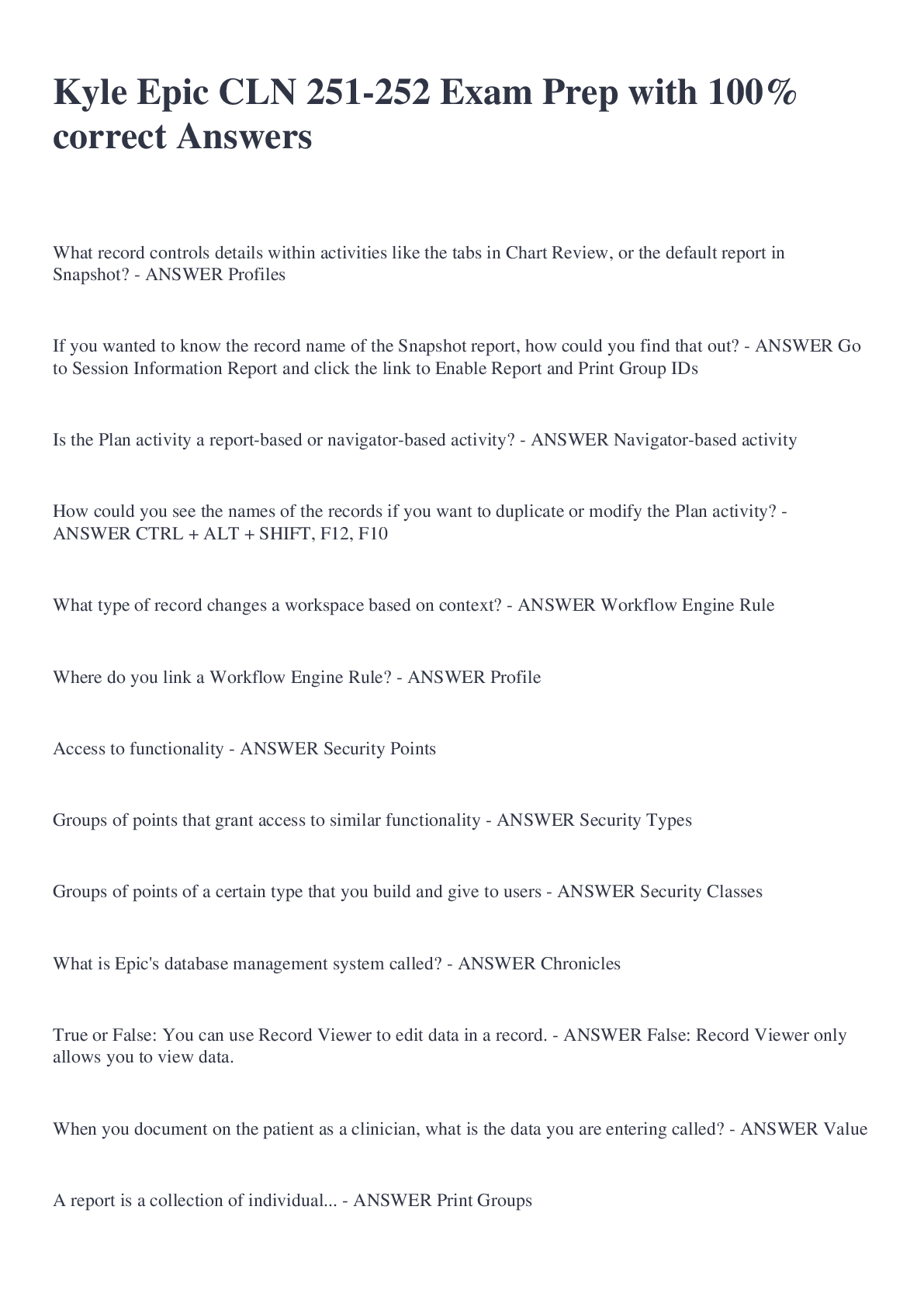*NURSING > EXAM > NURSING NUR1775 | Fundamentals ATI – Physical Assessment – Adult. NURSING NUR1775 | NURSING NU (All)
NURSING NUR1775 | Fundamentals ATI – Physical Assessment – Adult. NURSING NUR1775 | NURSING NUR1775, (Rasmussen College).
Document Content and Description Below
1. What is your primary goal in performing a comprehensive physical assessment? a. To document accurate data b. To develop a plan of care c. To validate previous data d. To evaluate outcomes of ca re ... 2. While performing a cardiovascular assessment, you might encounter a variety of pulsations and sounds. Which of the following findings is considered normal? a. A continuous sensation of vibration felt over the second and third left intercostal spaces b. A high-pitched, scraping sound heard in the third intercostal space to the left of the sternum c. A brief thump felt near the fourth or fifth intercostal space near the left midclavicular line d. A whooshing or swishing sound over the second intercostal space along the left sternal border 3. While examining your patient’s head and face, you determine that cranial nerve I is intact when the patient follows your instructions and successfully a. Sticks his tongue out. b. Smiles symmetrically. c. Hears whispered words. d. Identifies a minty scent. 4. Over which abdominal quadrant are bowel sounds most active and therefore easiest to auscultate? a. Right upper quadrant b. Left upper quadrant c. Right lower quadrant d. Left lower quadrant 5. When performing a complete, head-to-toe examination, which physical-assessment technique should you perform first? a. Auscultation b. Inspection c. Percussion d. Palpation 6. When using and maintaining your stethoscope, it is important to a. Insert the earpieces at an angle toward your nose. b. Use the diaphragm for listening to low-pitched sounds. c. Drape the stethoscope over your neck when not in use. d. Clean your stethoscope by immersing it in soapy water. 7. You are performing a physical examination of the spine for an older adult. Which of the following findings is common with aging? a. Lordosis b. Kyphosis c. Ankylosis d. Scoliosis 8. When assessing peripheral vascular status of the lower extremities, you place your fingertips on the top of your patient’s foot between the extensor tendons of the great toe and those of the toe next to it. Which pulse are you palpating? a. Posterior tibial b. Popliteal c. Dorsalis pedis d. Femoral 9. When performing a respiratory assessment, you auscultate wet, popping sounds at the inspiratory phase of each respiratory cycle. These sounds are best identified as a. Crackles. b. Stridor. c. Wheezes. d. Friction rub. 10. While performing an abdominal assessment, you place your fingertips over the patient’s painful area and gradually increase pressure, then quickly release it. The patient reports increased pain on release of pressure, so you document that your patient has positive a. Borborygmi. b. Rebound tenderness. c. Tympany. d. Abdominal guarding. 11. While performing a head-to-toe assessment, you perform the Romberg test. You do this to test the patient’s a. Gait. b. Hearing. c. Vision. d. Balance. 12. As part of your general patient survey, you find that your patient has a body mass index (BMI) of 23. From this finding, you can conclude that your patient a. Has no nutritional problems or deficits. b. Is at high risk for obesity-related health problems. c. Needs a referral to a nutritional counselor. d. Has a body mass index within normal limits. Show Less [Show More]
Last updated: 1 year ago
Preview 1 out of 4 pages
.png)
Reviews( 0 )
Document information
Connected school, study & course
About the document
Uploaded On
Apr 21, 2021
Number of pages
4
Written in
Additional information
This document has been written for:
Uploaded
Apr 21, 2021
Downloads
0
Views
19



.png)










